Central focus of the new Polish brand is manufacture of complementary, systemic solutions for travelers. We were asked to evaluate Strider’s first outdoor set. Tested units were tested in various circumstances, in constant contact with their primary designer. Strider gear went with us through Tatra and Świętokrzyskie Mountains in Poland. Lets start with some general information.
Manufacturer
First a few words about the Strider’s manufacturer. Polish producer who started with distribution of airsoft guns and tactical gear. Later, in 2012, they started making gear of their own design for uniformed services. Now, having extensive experience with demanding recipients, they turn toward civilian customers harnessing military solutions for outdoor market.
First Glance
Whole Strider system is composed of forty three elements, from a 50 liter backpack to details such as comfort pads for narrow straps, a veritable cornucopia of pieces.
Strider system is designed to meet the needs of any traveler: urban, mountain, survivalist, or photographer, each finds something useful. Fishermen, foresters, and hunters will be content with their selection as well. However, Strider selection requires a degree of planning. When buying individual elements you need to consider what really you want and choose accordingly. A purchaser of a whole set, on the other hand, has to learn which pieces to use for particular task.
Different pieces of the set in four colors. The largest ones are the backpack, the flight bag, and the touristic container. Also present are camera pouches, external pockets, the survival kit, inner soft belt, wallets, and other pieces
General Idea
Lets start with listing the elements of the set: backpack with separate waits belt, external pockets in three sizes, large waist pouch, camera pouch, first aid kit, map kit, waterbottle pouch etc. There is a lot of it and there will be more. The core notion is a reasonable versatility, cohesion, and ability to mix elements with each other. Thanks to extra straps, all the Strider accessories, such as pouches, map kit, and external pockets, can be carried individually.
Modularity was achieved by using strong fasteners and MOLLE webbing. Requisite attachment points you can find on all pieces of the set allowing fastening individual pieces almost everywhere. All buckles and slick clips are standardized, to connect different pieces as needed. Multiplicity of available combinations makes the gear even more versatile.
In essence, Strider system is supposed to be a complete answer to the issue of matching elements of different sets. Everything is fine tuned, fitting both technically and aesthetically. One set, one quality
Backpack with camera case, waist belt with external pockets and touristic container
Basic set for short trip. Waist belt with small pocket, first aid kit in the back, and waterbottle pouch.
Appearance And Endurance
At the first glance, the Strider system made a good impression with its rough aesthetics and solidity. It is designed with elegant simplicity and unobtrusively signed with the brand mark. Individual elements are similar looking, in nice subdued colors. We received test models in sand and pale green colors, with more colors planned. Manufacturing quality is kept high. 3M Cordura is the primary fabric, often reinforced with additional tapes. Pockets and flaps are closed with strong YKK zippers or quality hook & loop. Seams are tight and don’t attenuate or shred. Used buckles and clips can withstand large loads. Overall the construction is solid and durable. Unsurprisingly, as this touristic equipment is sewn with the same standards as gear for military personnel serving in Afghanistan’s mountains.
Stop during the first trip with Strider into the Polish mountains
MOLLE and Fasteners
MOLLE webbing is a military solution, popular, solid, and well tested. Unlike many competitors, Strider system does not use it as a universal filler of all flat surfaces or a randomly placed gadget. The designer used it reasonably, adding it in places making sense, where it is useful and functional.
Initially, I was skeptical about hook & loop, though. They are not known for durability and grip strength. My fears were baseless, however, as the Strider system uses a particularly strong and tough variety. They won’t hold a piano, but they will support a full pouch on a waist belt. Where the attachment is exposed to heaviest loads, the designers also added a buckle. Patches of soft fastener were also placed on fronts of some elements, allowing attaching plaques and markings. It adds to the aesthetics of the gear and helps personalize it.
Using MOLLE isn’t hard. Requires a minimum of patience and precision. Support tapes has to be interwoven through every other cell of both panels. Here connecting map kit with backpack’s waist belt
Each set can be quickly reassembled according to needs. Here Strider was optimized for photographic-journalism purposes
Backpack
Backpack is the main element of the set. Construction of Polish producer offers 38 liters of capacity, extendable by additional 12 liters after unzipping a lock surrounding the main compartment. Without accessories we can fit up to 50 liters. The change of capacity is fast and easy.
Collapsed backpack measures 55 × 35 × 20 centimeters, fitting the carry-on luggage restrictions of most airlines. After reaching the destination we can expand it, add some food, and hit the road. A negative quality of the backpack is its mass. Without waist strap, it weights 2020 grams, and with the longest one available it reaches 2320 grams.
The backpack has space for hydration system and opening for the tube on both sides. Its capacity should be sufficient for a week of supplies, assuming you will get additional pouches, and don’t take two sweaters. During winters, when you need to take additional clothing, you will be unlikely to pack for more than three or four days.
The foundation of each backpack is its load-bearing construction. The designers put their pride aside, and instead of reinventing the wheel, they purchased a license for SAS Plus system from another Polish company Wisport. That allowed them to focus on designing the interior. Wisport equipped their load-bearing system with stiffening, and height/length adjustments.
Backpack in Nomad Brown color, captured during the twilight. Visible side and upper loops, MOLLE webbing and both front pockets
Waist belt took out of the backpack with fastened MOLLE panels, basis of innovative modular system. Take a look at straps with snap buckles securing weighty first aid kit
The Exterior
Loops with buckles and straps are placed on the front and around. On the sides we’ll find MOLLE webbing to attach additional pouches and accessories. You can fit up to six small external pockets. Straps above are long enough to hold some more containers or clothing. Loops in front can hold an elastic cord that will hold rain jacket. If someone is stubborn, he can even use slick clips to attach more external pockets. On the backpack itself, without waist belt, you can attach up to eight additional containers, though its unlikely that such combination would be needed or comfortable to wear. Loops and straps are solidly sewn in, and were placed to not interfere with the opening. Transport grip at the top completes the backpack.
On the front flap we can find two large pockets. Both are divided into smaller compartments with mesh. Interestingly, they can be reached both from outside and inside of the backpack, when fully open you can reach inside the pockets without closing the flap. Lower pocket has a sewn in organizer for documents, keys, pens, and other trinkets.
Backpack seen from the side. Velcro holders for gloves and hiking poles are separate parts of the set. MOLLE webbing allows for attaching accessories of other manufacturers
Backpack a’la Swiss Army knife. Polar fleece in front. Rolled sleeping pad to the right with hiking poles attached. Bed roll at the top. On the upper left a waterbottle pouch and gloves holder. Below – a camera pouch, with a phone case and a powerbank attached.
Looking Inside
Strider backpack is a typical construction with access from the front, without possibility of packing from the top. You can try it anyway, because the flap can be fully opened with a two-way zipper, from the top to the near bottom. While the full access to the internal chamber is excellent idea, the direction of opening has its share of issues. To fully open the Strider backpack, you need a lot of space and the contents of the pockets can turn around and mix.
Internal solutions are commendable. Instead of offering a simple bag, the designers give us fitted organizers that are held by hook & loop. They can be taken out but they excellently help segregate contents of the backpack. They are in two sizes, made either of cloth or mesh. They are kept horizontally inside, occupying one-sixth or one-third of space within collapsed backpack. After expanding, you get extra space. The fasteners holding the organizers can be used for other things. I did that myself going out for groceries. I moved a first aid kit and a pouch from waist belt to the backpack to free the belt. Later I returned them to the belt and rest of space used for jacket and food. There was still a lot of space left.
With a clear conscience I can rate the backpack highly. Quality, simplicity, capacity, design of exterior, and extra organizers. Negatives include weight and average, though still working way of opening. As a whole, it is functional, comfortable, well designed, and aesthetically pleasing. That is a really good backpack.
Interiors of large pockets in backpack’s flap. Total of six, with five closed with zippers
Interior of a fully open, collapsed backpack. Visible mesh pockets on the flap, and four organizers attached inside. On the waist belt, fastener panel for small external pocket. Buckle securing the attachment /Photo: Strider Adventure Gear
Interior of the backpack without the organizers. Visible fasteners in the back and sides
Belt Two In One
A novel idea of Strider designers is a waist belt that can be taken out of the backpack. A great idea, that allows you to leave main baggage in the base (hostel, shelter), attach pouches or cases, and go lightly on the trail, having at hand anything you would need for the day. The belt is connected to the backpack with a velcro panel with the contents weight additionally holding it in place. After disconnection, which isn’t easy as the fastening is very firm, you can put a MOLLE panel on it, allowing for attachment of pouches and pockets. Additional MOLLE tapes are on both sides of the belt. That way, you can have two containers at hand while carrying a backpack, or up to four if you take off the backpack. According to Strider designers intent, it can be a base for additional packing system. The belt was fitted to male anatomy, and women with wider hipbones can have some problems with abrasions after more intense days of traveling. Fitting the belt to waist should solve that issue. Adding extra padding in critical points can be considered as well.
External Pockets And First Aid Kit
Strider offers three sizes of external pockets. Interiors of small and medium are fully organized. The large one can fit one of the two inlays attached to the interior wall – first aid kit or EDC organizer. The first aid has good capacity with an internal wall, splitting into three parts when opened. You can easily fit contents meeting the DIN 13164 standard for car first aid kits.
All the pockets have the long two-way zippers and can be fully opened and spread on flat surfaces. Inside we can find mini-pockets and elastic loops helping organize the contents. After filling them all, there is little space left. Without problems we can adapt small pocket to the role of small first aid kit or fit inside a full survival kit meeting the British SAS instructions. Going into higher mountains, we can fit an emergency kit within the medium pocket in case of getting lost and having to stay outside during the night.
Pockets were designed with three ways of carrying in mind. Backsides are covered with velcro to which we attach MOLLE webbing panel and put it on the backpack or waist belt, with an additional option of securing the pocket with snap buckle. We can use loops for slik clips with additional straps and carry as waist pouch. Finally, we can use small fastener panel to attach it horizontally to regular belt. Regretfully, the large pocket is too heavy to carry in that way.
Initially, the panel system was confounding. Why the tapes aren’t sew directly onto the pocket? Soon, we discovered that Strider system solution provides greater versatility and works faster. The hook & loop together with snap buckles allows for quick change of configuration, and are holding well enough that even the panel from the smallest pocket holds the largest one. Additionally, when we want to spread a pocket open in front of us, unlacing MOLLE each time would be a terrible waste of time. Strider system allows detaching any element from the rest with a few moves and each pocket can be held in at least two positions – horizontal and vertical. Elastic loops and tight mini-pockets secure the contents well enough.
Small pocket currently functions as an everyday waist pocket, replacing woman’s purse. If you want to keep your EDC set at hand, just in case – simply use the medium pocket.
External pockets in three sizes
First aid kit. Securing tape with buckle is sewn to fastener-MOLLE panel. It allows for carrying the pouch at the belt or backpack with heavy load and be easily detached and used when needed
Large external pocket with partly detached MOLLE panel. A security snap buckle visible in top left. On both sides there’s a loop to attach the strap turning the pocket into waist pouch
Second Waist Belt
An idea that particularly appealed to us out of the whole set was that of the utility belt. Again, it is a military solution adapted to touristic-survival uses. The belt is actually a sleeve inlaid with cushioning foam, put over regular belt. From outside, it is covered with MOLLE webbing. We have more webbing cells than in the case of the backpack waist belt, which allows attaching more additional elements. There is enough space to mount at least three containers, including large touristic container. Another of its advantages over backpack belt is its softness and flexibility, making it much more comfortable as independent carrying system. Reaching for things carried at the back, you simply move the belt around your waist. It was invaluable while carrying photographic gear during mountain trips.
It is an additional element of the gear, though, making its utility questionable if you already have Strider backpack. We found it useful during two people trip. Things that were heavier and needed for later went into the backpack, while things that were supposed to be handy ended up on the belt. Obviously, we covered it with pouches and cases. Utility belt with webbing inner-belt and Cobra buckle weights approximately 420 grams.
During the trips we suffered lack of more specialized cases for knife, hatchet, and such tools. Additionally, bigger loads make the back surface to tilt away from the body. It could use suspenders for that, which we told the designer. Otherwise it is a great construction, with touristic container acting as excellent light load bearing system for shorter trips when we want to free ourselves from the backpack
Survival kit following SAS instructions fitted into small external pocket and wallet above
Small external pocket with personal medical insert and opened first aid kit with universal touristic insert /Photo: Strider Adventure Gear
Touristic Container
Big pouch, called touristic container is another story. It has capacity close to 8 liters and is closed with a two-way zip lock. It is stiffened with velcro panels, allowing it to maintain its shape even when it is empty. On its sides, two MOLLE panels of four cells each are placed, exactly enough to attach the small pocket. There are also two sets of loops, underneath and in front, over 40 cm long. Its far more than is actually necessary. Inside we can find tapes underneath the flap and two mesh pockets, the front one closed with a zipper, and the side one open.
The touristic container can be attached to belt with MOLLE tapes, or be carried as a shoulder bag with buckled strap and dedicated loops. An empty pouch without the strap weights 640 grams.
What is it for? It works the best as a substitute for backpack, when we hit the road equipped with the belt. Using the loops we can easily attach a sleeping bag and a poncho, inside we can fit food, gear for a day, portable stove, and canteen. Even with all that there will be a lot of space left. After supplementing the belt with a waterbottle pouch and external pocket, we are ready to venturing forth, spending the night outdoors, and returning for lunch.
The touristic container has two observable flaws. One is that loaded and attached pouch, on steep approaches starts to bounce noticeably. That is irritating but can be get used to. Thankfully, the mounting is wide enough to avoid hurting spine. The second problem is lack of transport handle. It could be used to move it from place to place or as a grip for turning the belt.
Besides those details, touristic container is great. It proved itself during trail runs and during trips, as a handy bag for beer and cards. It is an excellent piece of gear for the start and testing of capabilities before purchasing the rest of Strider system.
Touristic container in described configuration. We can easily attach summer bed roll and waterproof cape
Touristic container with the contents. Some free space is still left
Close up of touristic container. Visible both mini-pockets and loops under the flap. Outside, a transport strap is attached allowing for carrying it as a shoulder bag / Photo: Strider Adventure Gear
Put On Weight
An issue with Strider set is its mass. The backpack with waist belt alone weighs 2320 grams, and after adding the largest external pocket and waterbottle pouch reaches 2715 grams. Quite a lot. Users counting every 50 grams won’t be happy. That is the price paid for the gear’s durability because of the materials used. Thankfully, the handiness of the system compensates its high weight. After adjusting the straps, the backpack hugs the user, and the mass stops being so perceptible. Conclusion: this is not equipment for reaching Spitsbergen, but a durable touristic gear for not overly long trips.
A Bit Of Getting Used To
Initially, I found reaching so far backwards to grasp the pocket zipper unwieldy, but soon I found a solution. I just set the slides on the zip-locks in different position than default. It did not affected the security of the zipper.
I also felt strange with things hanging at my hips, especially when it was camera pouch or large external pocket. While it was an issue early on, hampering a bit in march, the discomfort passed with time and the pouches became comfortable support for my arms. There was no discomfort at all when walking with hiking poles. People used to wearing waist pouches shouldn’t have issues at all.
It is hard to find serious flaws with Strider system. There is no unnecessary standing-out elements or excess purposeless straps, zippers work fine and don’t grab the surrounding fabric. If you remember where you put your things, reaching them takes seconds, though with so many pouches it is easy to forget where you put what. A viable answer is packing things according to some sort of pattern.
One of the Strider system’s advantages is stability of individual elements. After matching them together, everything fits well. Carrying straps hug the user and stay that way. Only smaller people can have some issues, though the backpack’s waist belt is available in three sizes. Marathon runners or models with waist of Scarlet O’Hara can have problems with fitting them. Overall, skill with using MOLLE webbing and proper adjustments are key to success.
Even with a great many thing put on, colleague from editorial office didn’t complained on discomfort. She wears backpack’s waits belt with three elements. On the straps waterbottle pouch and camera pouch. On the right shoulder comfort pad can be seen
Photographic kit on the waist belt as a presentation of the system’s capabilities. Not only the tourist should be interested in new Polish brand / Photo: Strider Adventure Gear
Elements mentioned but not described in this review. From left: camera pouch, waterbottle pouch, and map kit
Wet problem
I mentioned the set durability before – it is at high level. Waterproofing can be a problem, though. Cordura itself is quite resistant to moisture but is not a real challenge to intense rainfall. Drizzle in the mountains failed to penetrate backpack and external pockets. Zippers aren’t sealed, but they are protected with double flaps of fabric. Fortunately the backpack comes in set with a waterproof overlay.
Waist belt with pieces of the set attached. Clearly visible padding. Touristic container visible on the backside
On trail and in train
Strider is very comfortable for the user during the march and rest. Sitting in a bus or a train is less comfortable. Sometimes, especially during a short ride, we don’t want to take off the backpack. If we have anything attached to the waist belt, we have to occupy two seats. Backpack with attachments takes a lot of space and the wearer won’t be able to seat in an armchair. People going between the seats almost certainly will catch on waterbottle, external pocket, or waist pouch. Thankfully, we won’t suffer nearly as bad outdoors. On narrow mountain trails even the bush branches didn’t caught on gear, sliding to the sides without problem.
Important details
After two days of carrying the gear in high temperatures there were no abrasions no hurting arms or backs. Keeping the baggage clean wasn’t a problem. Cordura can be easily washed with warm water and soap. Even chocolate came off leaving no stains on bright, sand-colored fabric.
In the end
We shared all of our observations and remarks with the designer. We’ll see if search for compromise between needs of users and production circumstances will allow for elimination of drawbacks.
To sum up, let me gather all the most important facts in one place. Strider’s primary advantages include functionality, quality, attention to detail, and thought out organization. Modular construction and interaction between elements – the creator’s main goals, were reached and work in practice. Together it forms a versatile system of carrying baggage that can successfully replace military tactical gear, as more finely tuned to civilian purposes.
Primary drawback is its mass. Of course, it wasn’t designed for all the outdoor activities. For example, mountain runners probably won’t find anything for themselves. Despite that, the array of potential users remains wide. Strider will be a great companion for tourist, hunter, and even border guard. It will be useful in orienteering, and individual elements can be used in climbing. There is also the question of price, which can restrain access to the whole set. Even then, it is a good gear that is worth assembling piece by piece, to know we have something we can rely on.
This article was originally published on MILMAG 05-06/2018


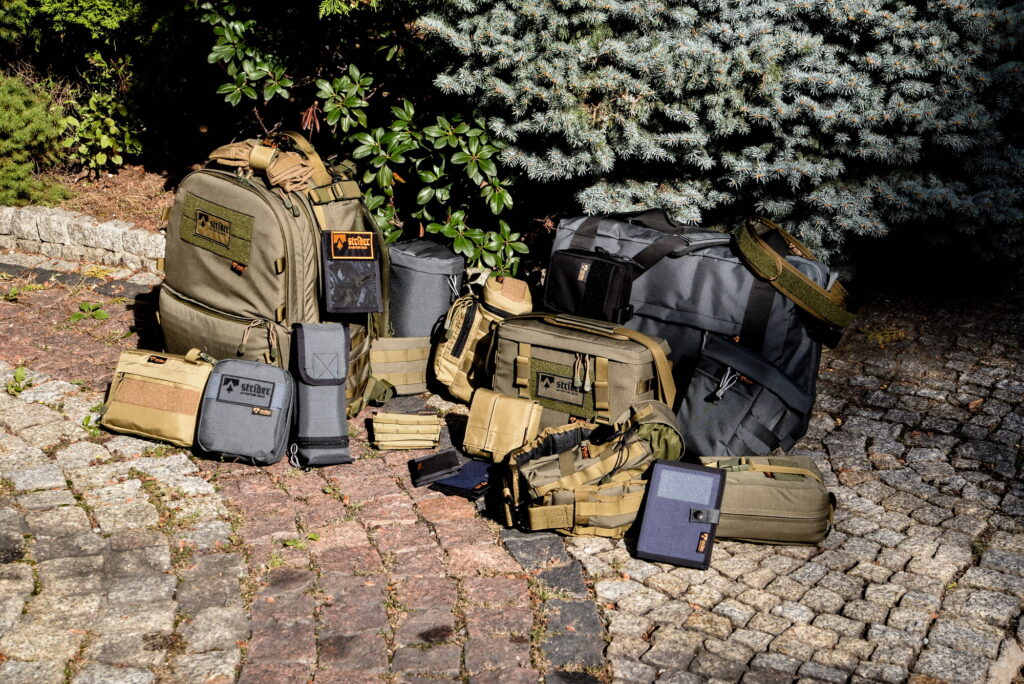
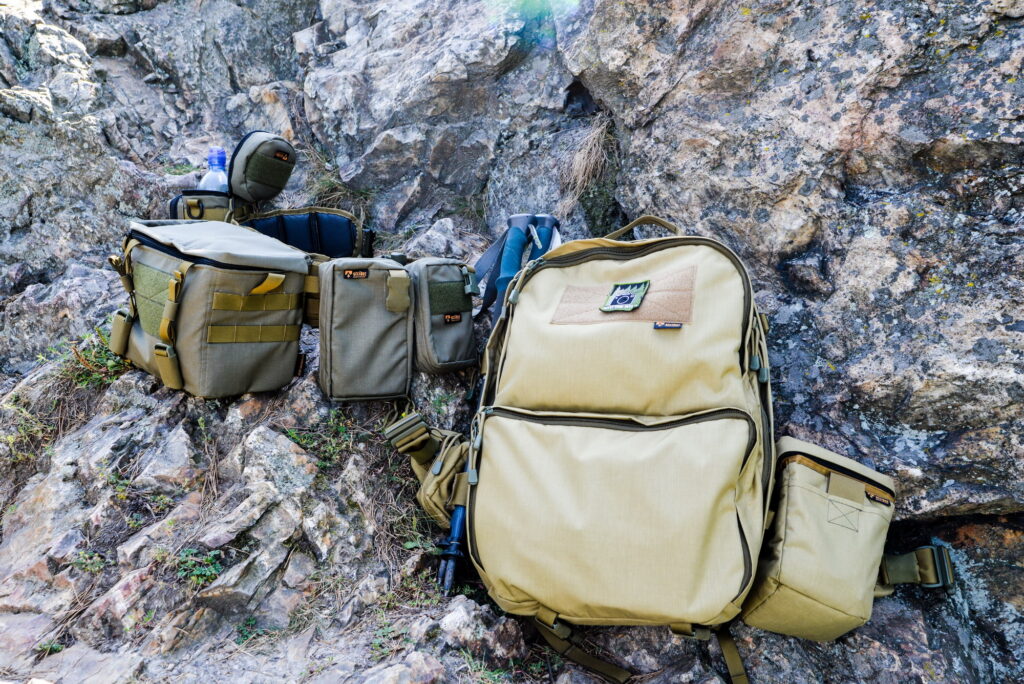
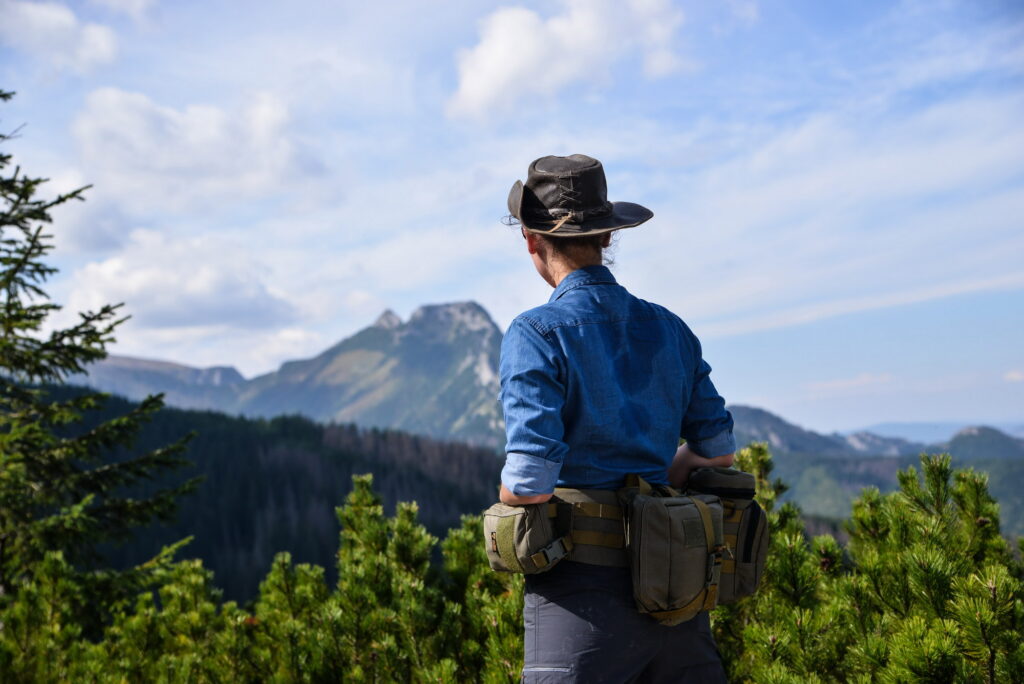
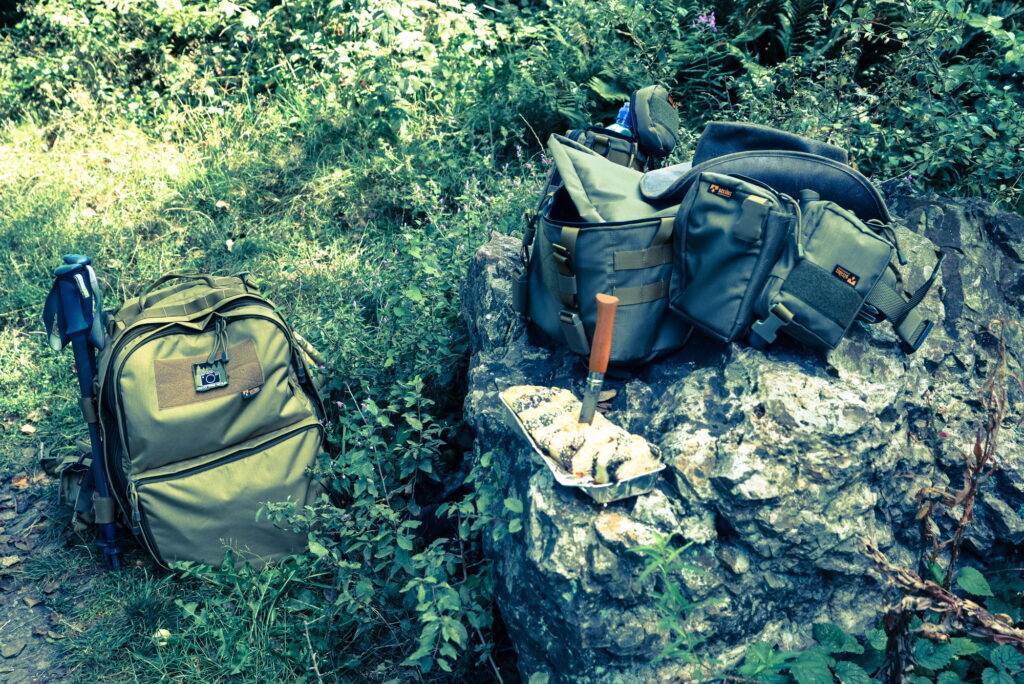

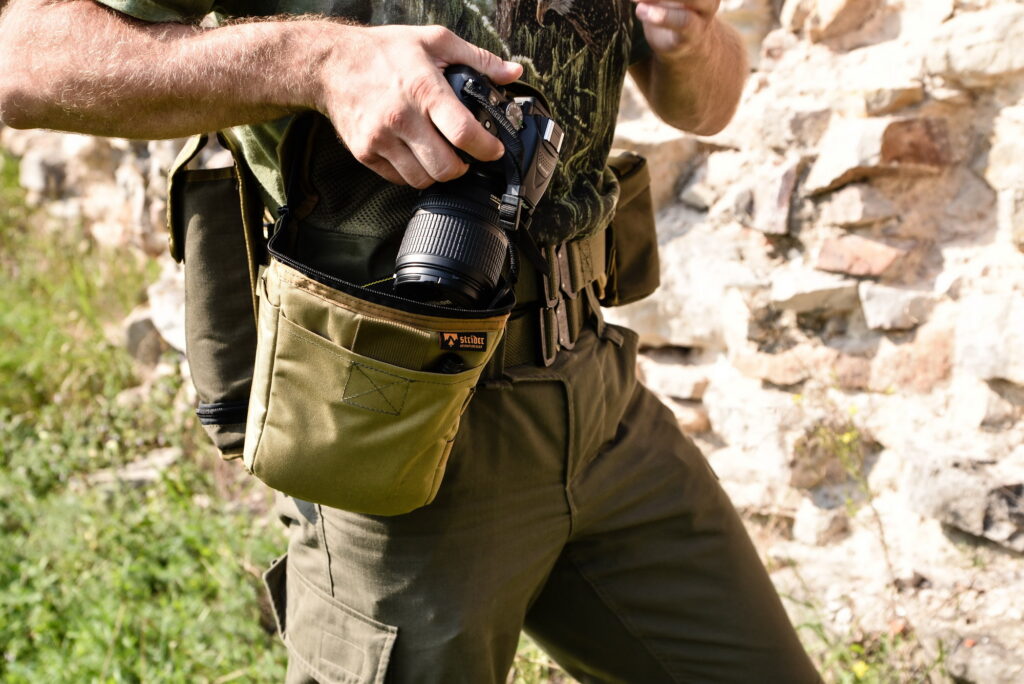
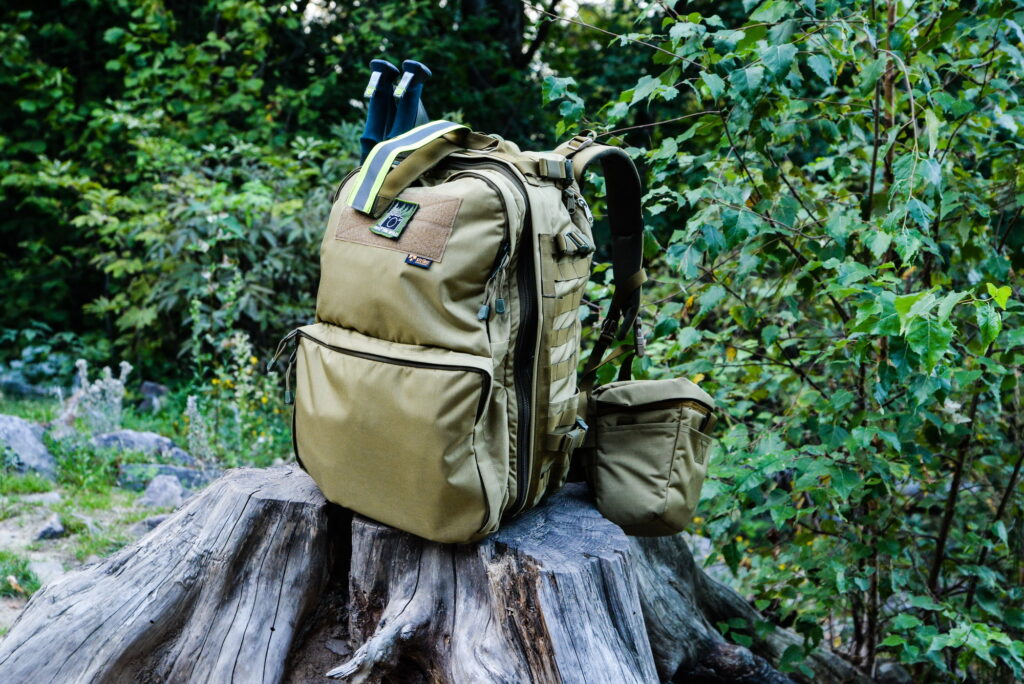
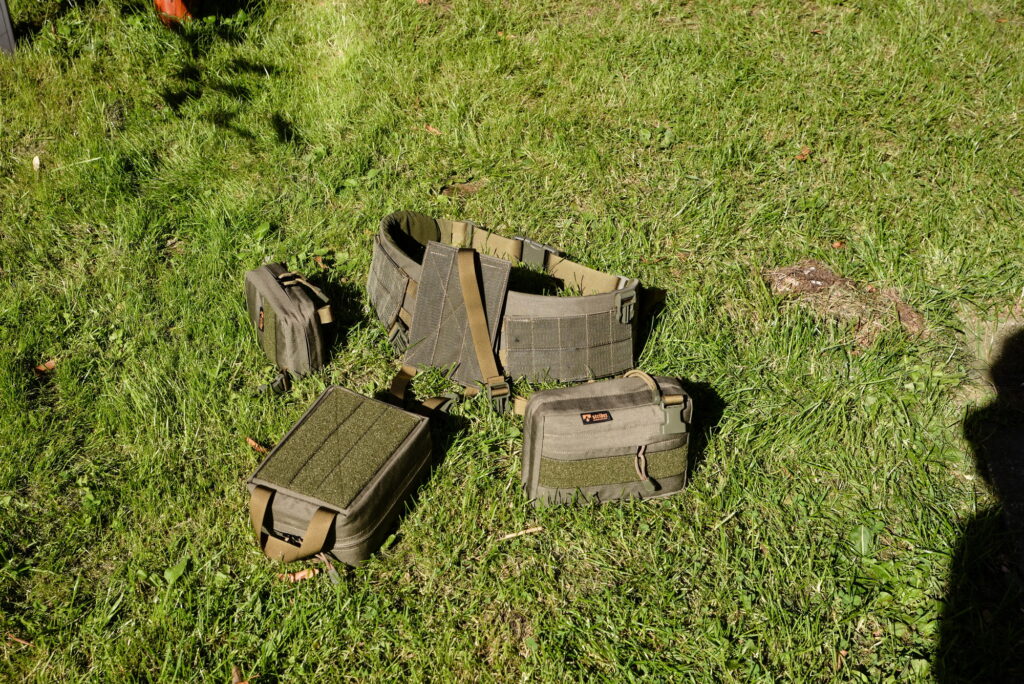

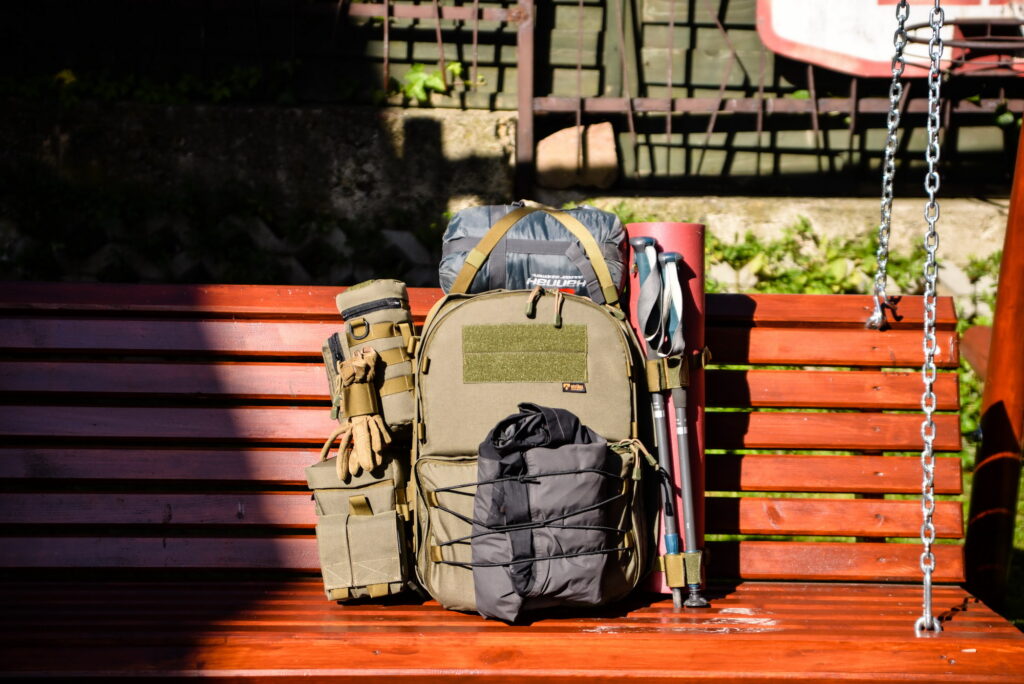
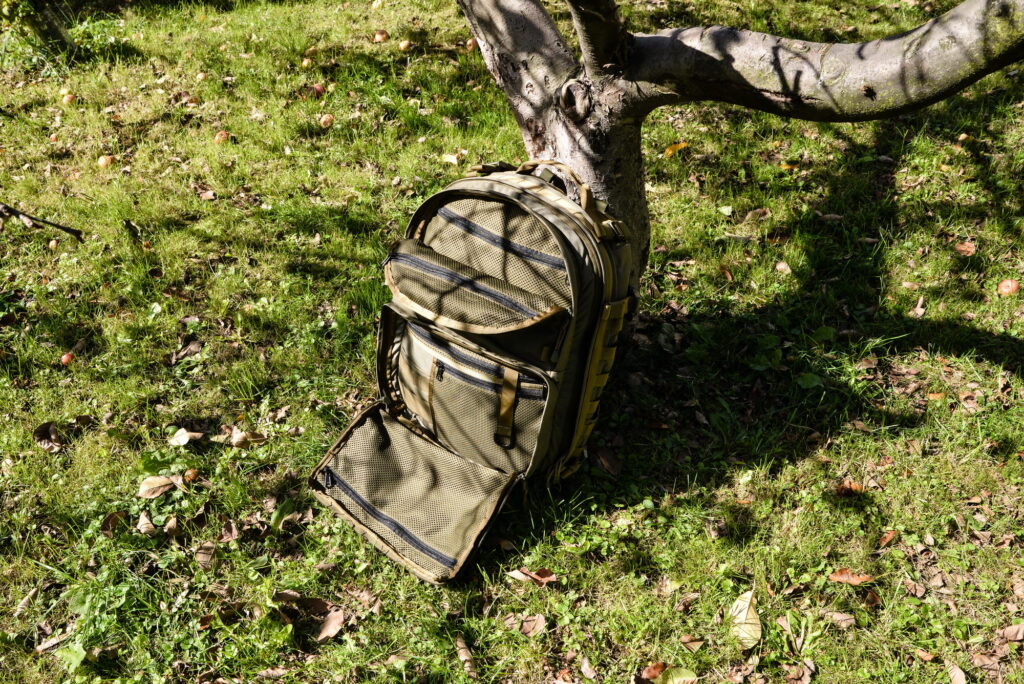
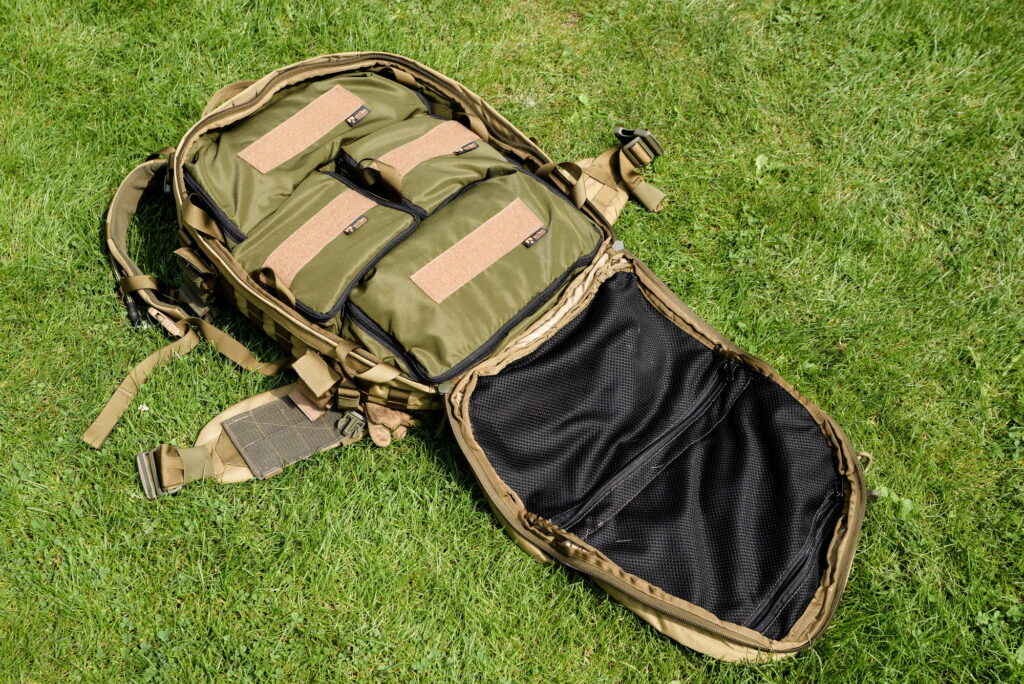
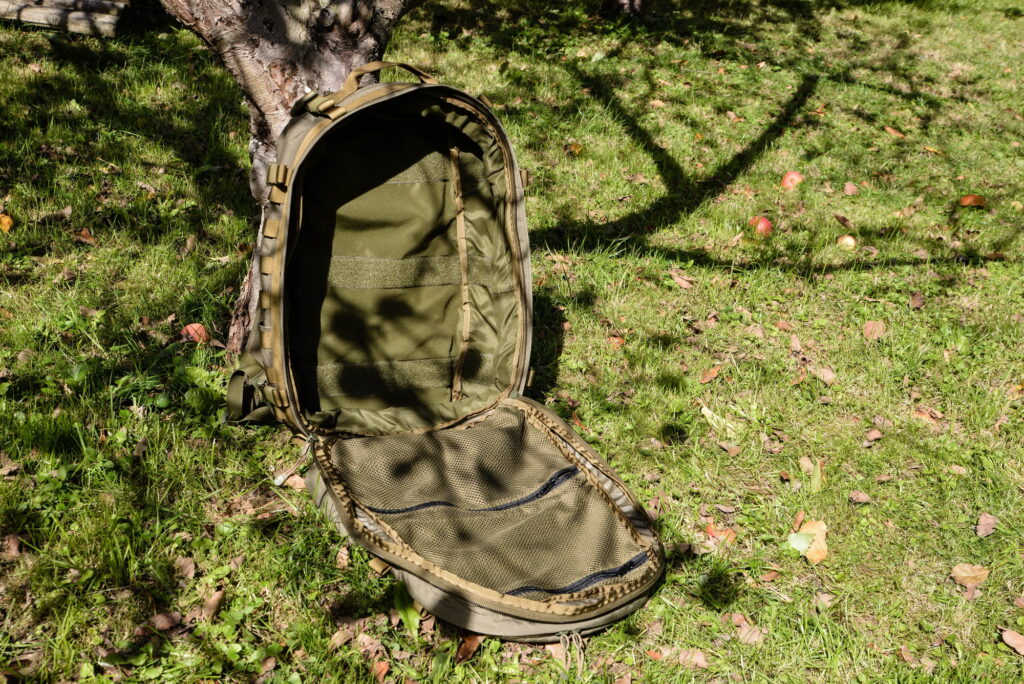
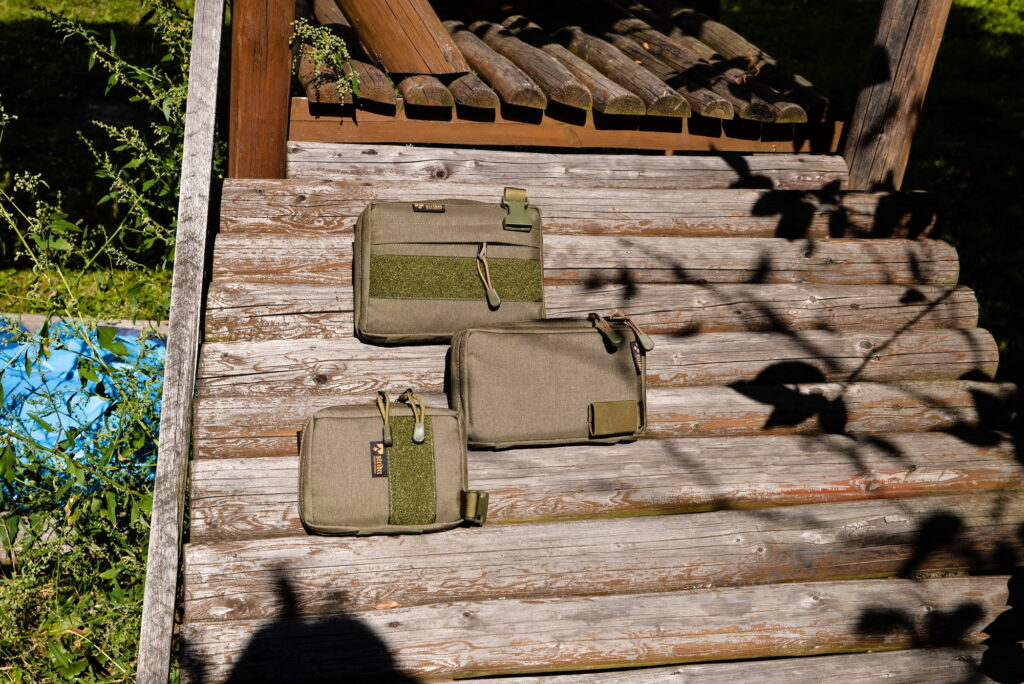
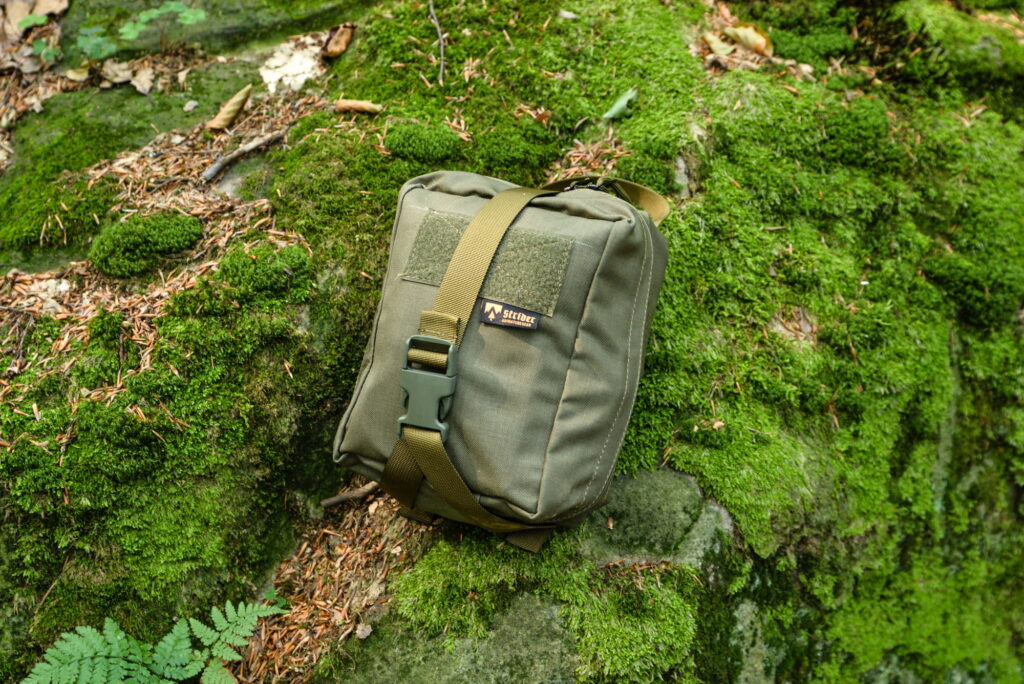
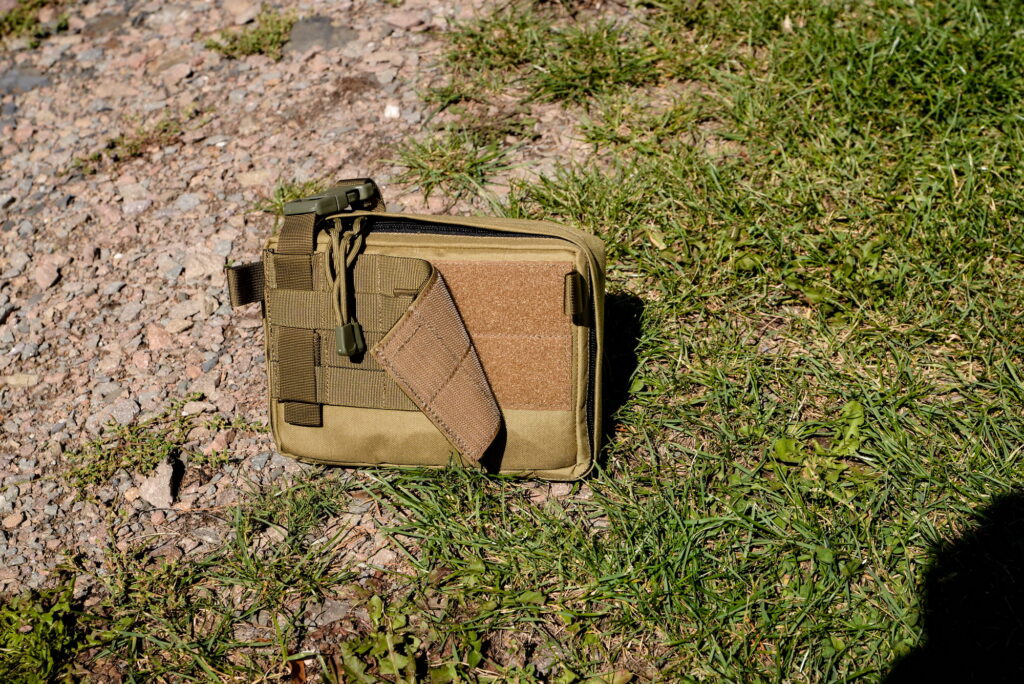


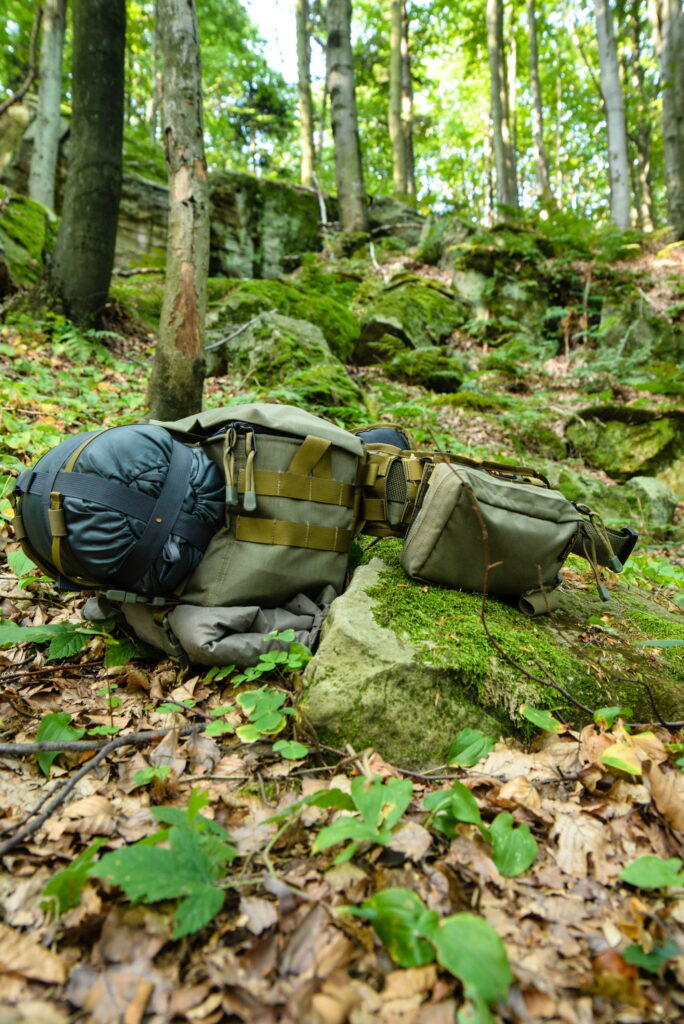
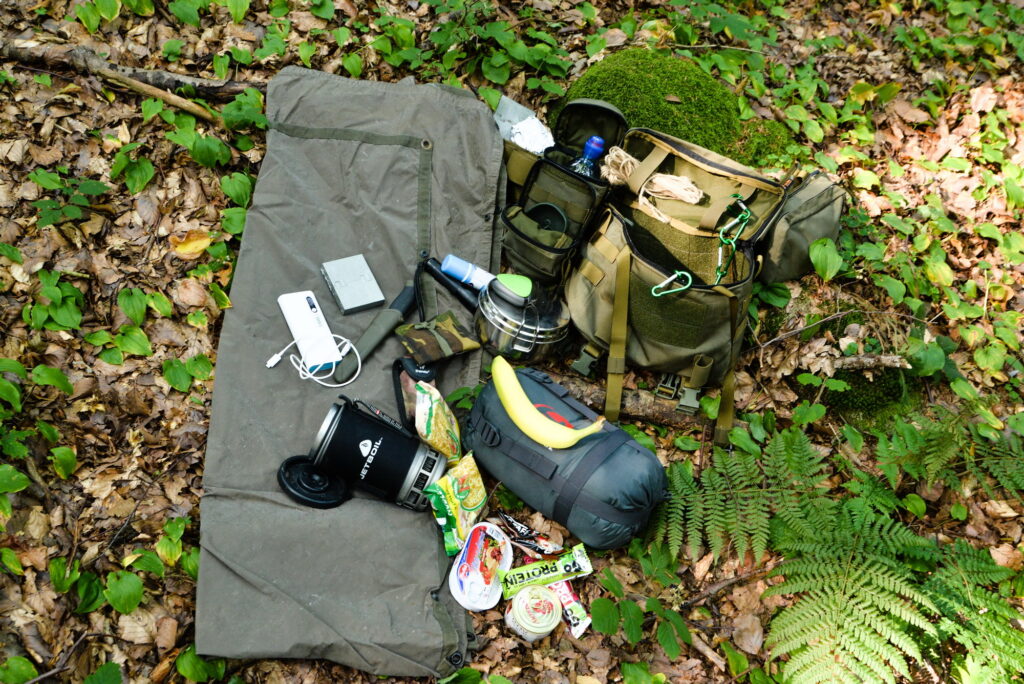
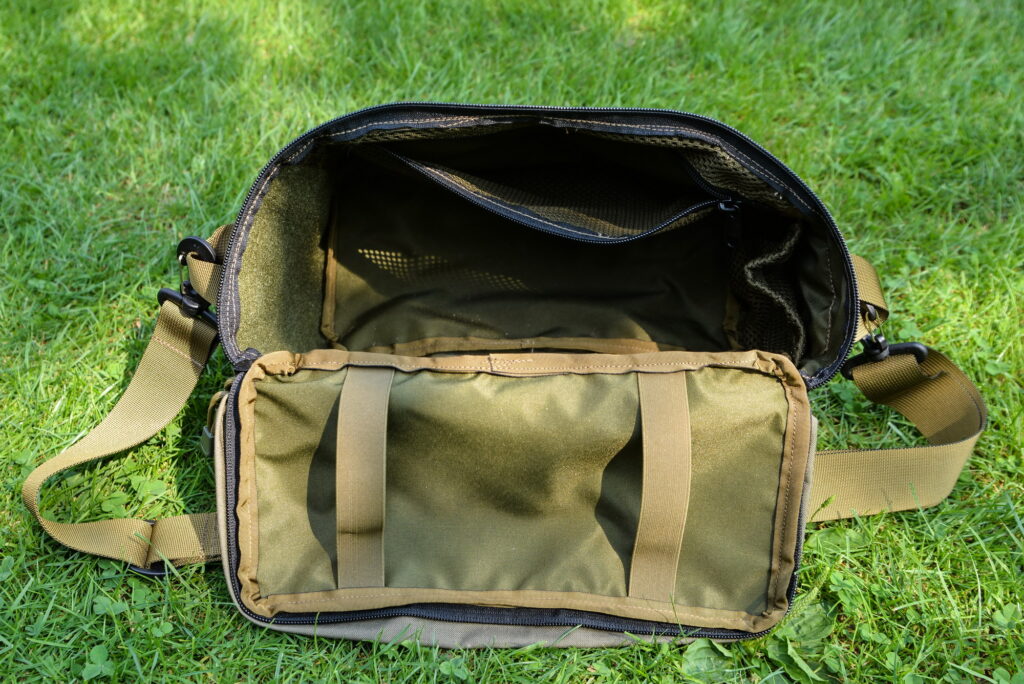
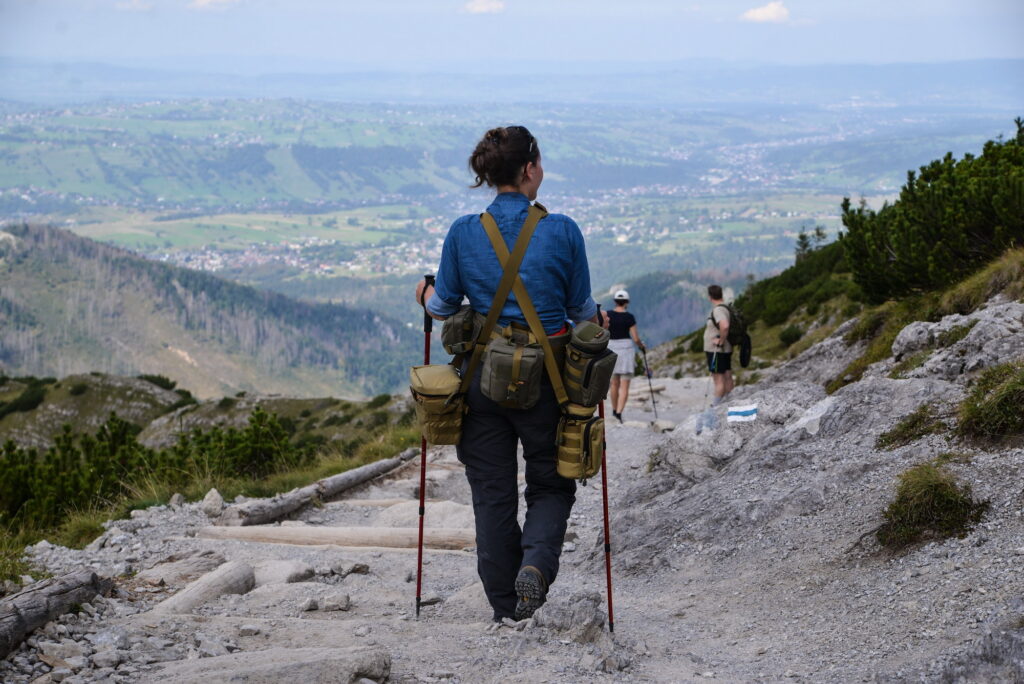
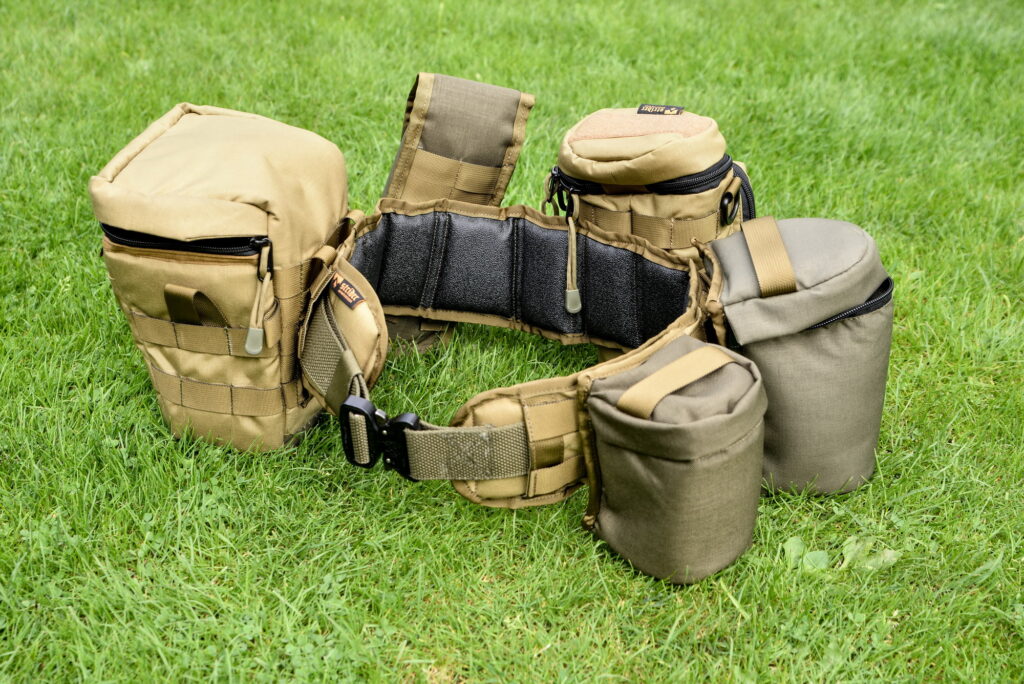
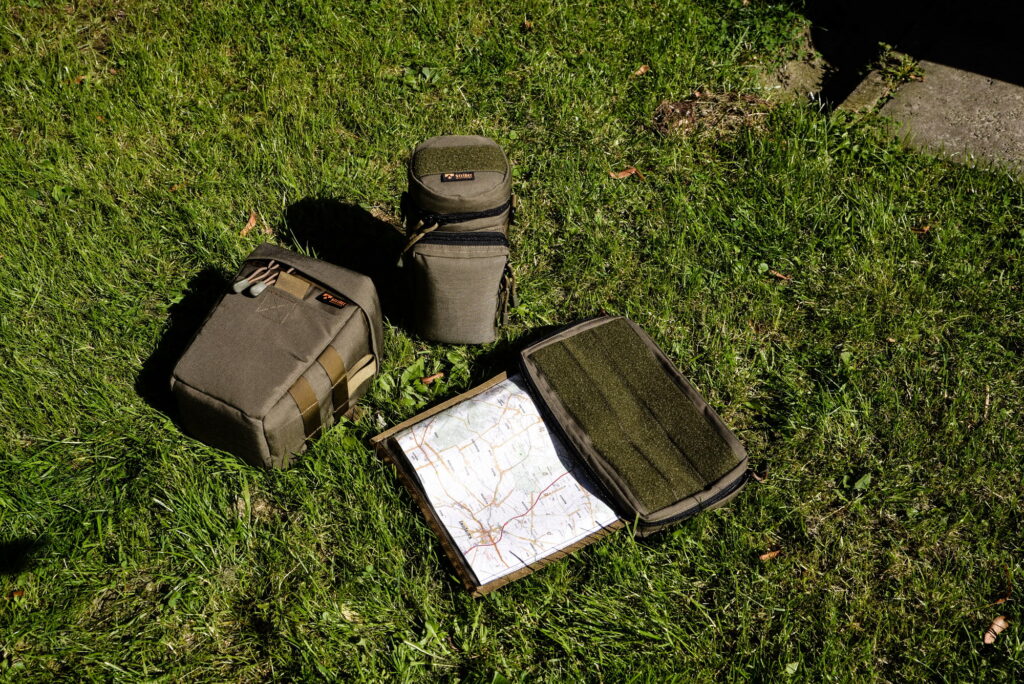
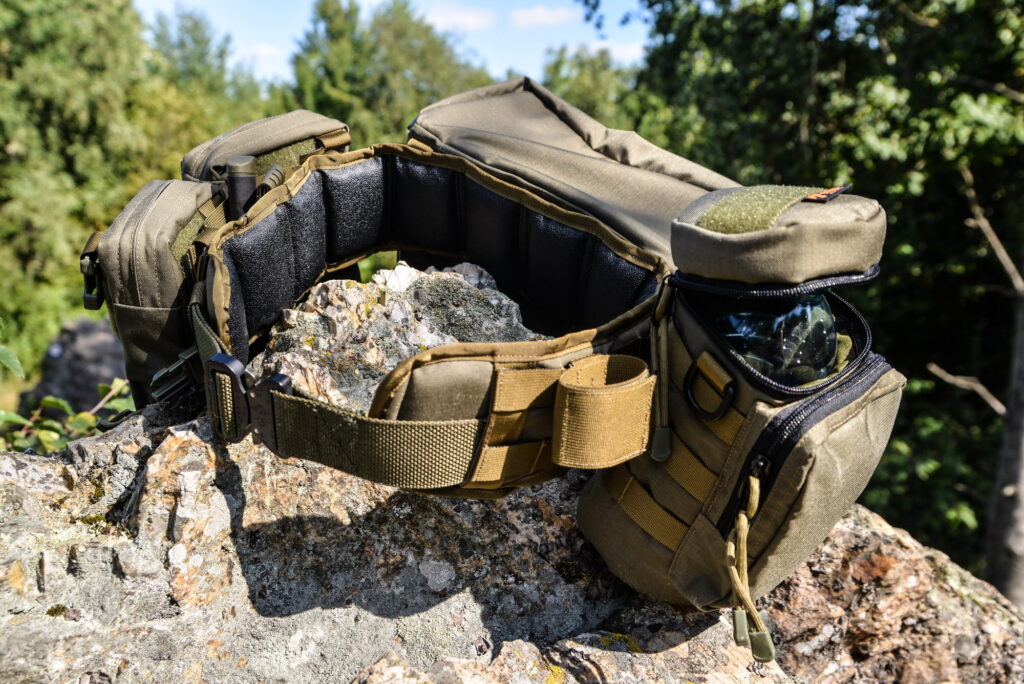


Comments
Nobody has commented on this article yet.